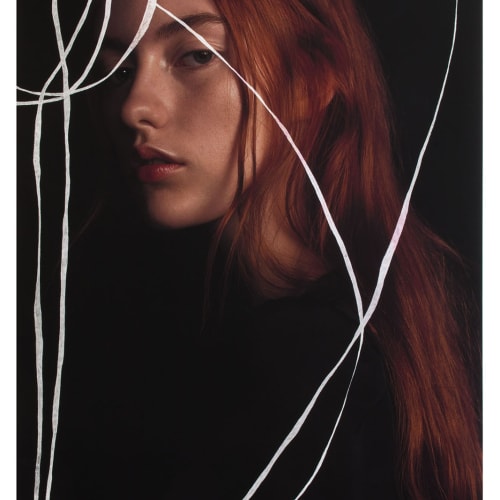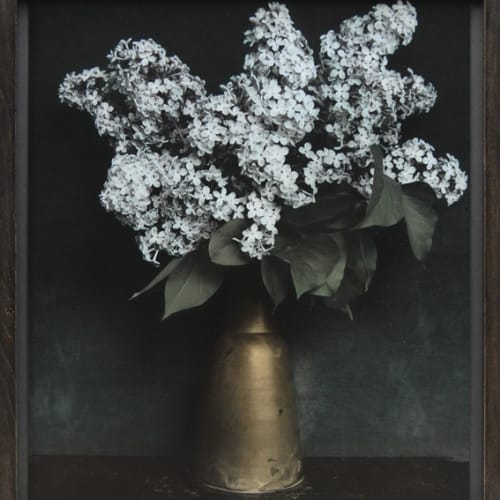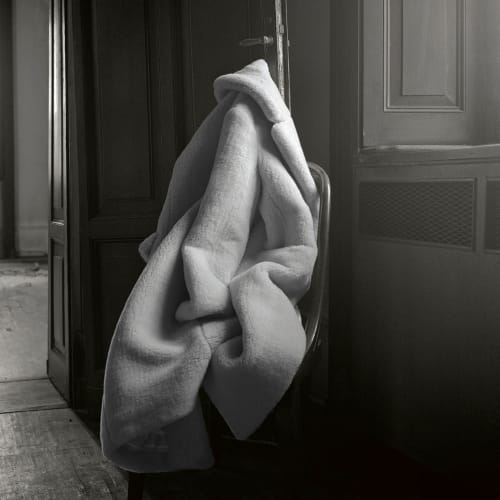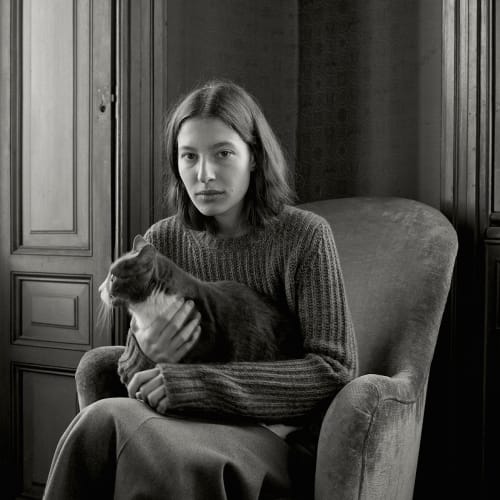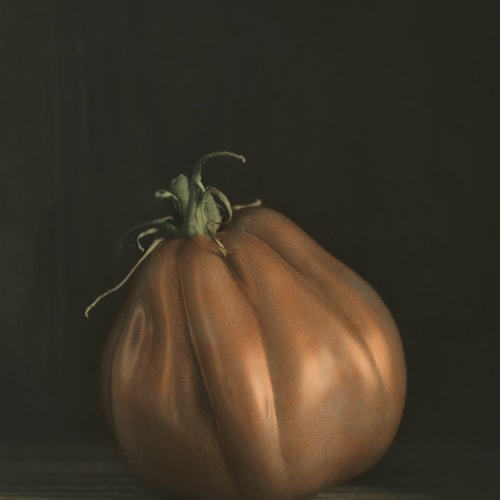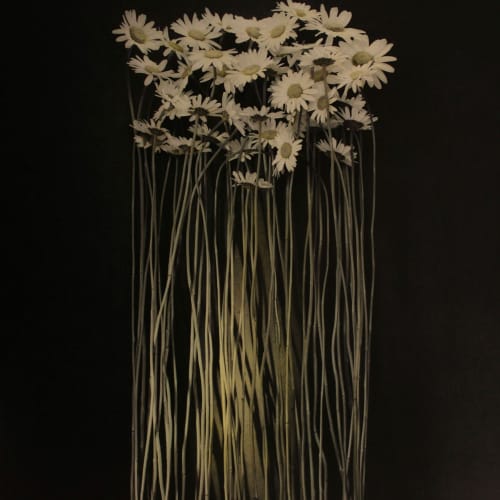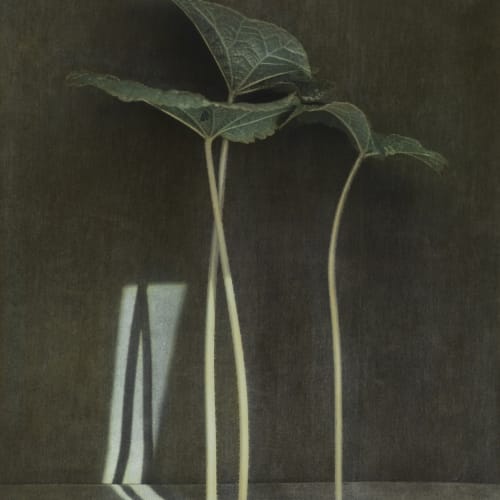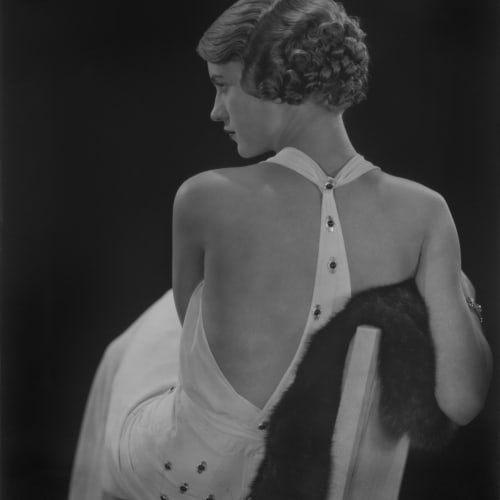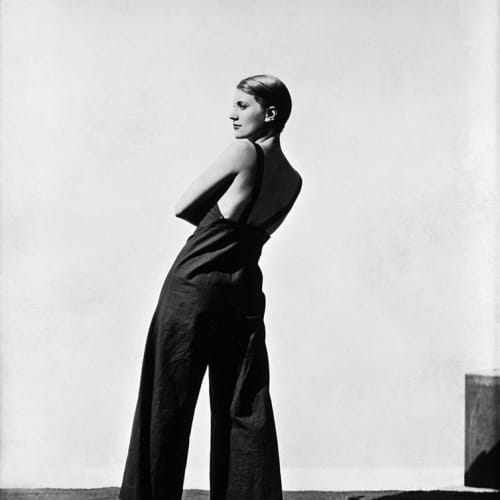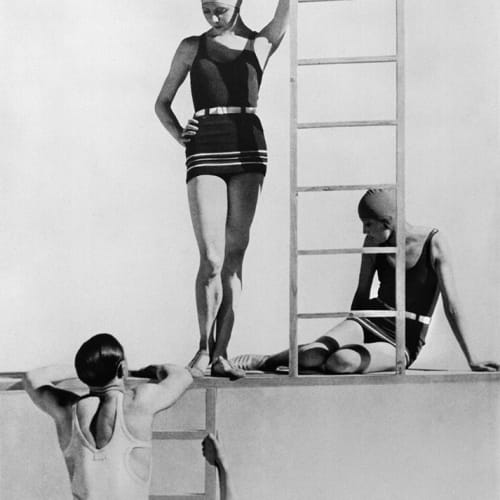from 12 pm to 9 pm
The focus of this year's exhibition concept is on the subject of different approaches on portraiture.
On one hand, we showcase some of the iconic works of the legendary George Hoyningen-Huene, a pioneer in fashion and portrait photography. In the 1920s and 1930s, Paris stood as the most powerful center of creativity and art, with Hoyningen-Huene recognized as one of the most important chroniclers in the intertwined worlds of art, fashion, design, film, and high society. His carefully lit studio compositions, incorporating elements of modernism, neoclassicism, and surrealism, solidified his position as a leading photographer for magazines such as "Vogue," "Vanity Fair," and later "Harper's Bazaar" from 1926 to 1935. The lighting in his photographs, seemingly from another world, imparts a radiant quality, transforming people into stars, even if they remain unaware of it. Revered by his contemporaries, he served as an inspiration to subsequent generations of legendary photographers and filmmakers worldwide. Richard Avedon described Hoyningen-Huene as "a genius, the master of us all."On display are exclusively platinum-palladium prints, notable for their rich and matte surface, ranging from velvety blacks to various shades of gray and delicate white tones. However, the perfectly staged light hovers over everything.In contrast to these classical black and white images we present a large-format, contemporary portrait photograph from the collaboration between artist Tina Berning and photographer Michelangelo Di Battista. Tina Berning uses paper, brush and paint. She tries to keep the digital elements out of her art from start to finish.
Their creative journey started in 2007 and since then the duo have been working together in mesmerizing artworks that merge photography with illustration in a unique way. The two artists’ creative processes never intertwine and take place separately. Michelangelo Di Battista shoots the portraits and Tina Berning receives the pictures free from instructions. Michelangelo loves to see what Tina adds to his photographs and how she interprets them with her skillful and artistic creativity. Whether it’s with thick charcoal lines, colorful woven ribbons, texts or something completely different.
Furthermore we present a portrait of a young, dark-haired Italian woman sitting in an armchair by the window and facing the photographer Ingar Krauss. Her posture and mood are reminiscent of Italian Renaissance portraiture. She holds a cat protectively against her, as if to distract from herself. Her calm gaze does not let go of the viewer, perhaps because this gaze asks for nothing, not even attention. Krauss' photographs don't want anything either.
These different approaches on portraiture are juxtaposed with the peaceful still lives by photographer Ingar Krauss who carefully arranges his pears, quinces, lilacs or flowers in stage-like boxes of his own construction, then shoots the composition under natural light and creates a gelatin-silver print to which he applies a delicate glaze of oil paint. Some subjects are suspended from a string at the top of the box, while others are positioned in the foreground against a deep, darkening depth of field and placing the natural world, both literally and metaphorically, on a pedestal. Measured in terms of their presence, the pictures could also be seen as portraits of these things of nature that, being freed and eliminating of time to the same extent, become symbols of transience. Krauss is interested in the hidden relationship between the inner life of human beings and the world of plants and animals, and he wants to transmute those commonplace subjects by a process of replacing inattention with contemplation.
On one hand, we showcase some of the iconic works of the legendary George Hoyningen-Huene, a pioneer in fashion and portrait photography. In the 1920s and 1930s, Paris stood as the most powerful center of creativity and art, with Hoyningen-Huene recognized as one of the most important chroniclers in the intertwined worlds of art, fashion, design, film, and high society. His carefully lit studio compositions, incorporating elements of modernism, neoclassicism, and surrealism, solidified his position as a leading photographer for magazines such as "Vogue," "Vanity Fair," and later "Harper's Bazaar" from 1926 to 1935. The lighting in his photographs, seemingly from another world, imparts a radiant quality, transforming people into stars, even if they remain unaware of it. Revered by his contemporaries, he served as an inspiration to subsequent generations of legendary photographers and filmmakers worldwide. Richard Avedon described Hoyningen-Huene as "a genius, the master of us all."On display are exclusively platinum-palladium prints, notable for their rich and matte surface, ranging from velvety blacks to various shades of gray and delicate white tones. However, the perfectly staged light hovers over everything.In contrast to these classical black and white images we present a large-format, contemporary portrait photograph from the collaboration between artist Tina Berning and photographer Michelangelo Di Battista. Tina Berning uses paper, brush and paint. She tries to keep the digital elements out of her art from start to finish.
Their creative journey started in 2007 and since then the duo have been working together in mesmerizing artworks that merge photography with illustration in a unique way. The two artists’ creative processes never intertwine and take place separately. Michelangelo Di Battista shoots the portraits and Tina Berning receives the pictures free from instructions. Michelangelo loves to see what Tina adds to his photographs and how she interprets them with her skillful and artistic creativity. Whether it’s with thick charcoal lines, colorful woven ribbons, texts or something completely different.
Furthermore we present a portrait of a young, dark-haired Italian woman sitting in an armchair by the window and facing the photographer Ingar Krauss. Her posture and mood are reminiscent of Italian Renaissance portraiture. She holds a cat protectively against her, as if to distract from herself. Her calm gaze does not let go of the viewer, perhaps because this gaze asks for nothing, not even attention. Krauss' photographs don't want anything either.
These different approaches on portraiture are juxtaposed with the peaceful still lives by photographer Ingar Krauss who carefully arranges his pears, quinces, lilacs or flowers in stage-like boxes of his own construction, then shoots the composition under natural light and creates a gelatin-silver print to which he applies a delicate glaze of oil paint. Some subjects are suspended from a string at the top of the box, while others are positioned in the foreground against a deep, darkening depth of field and placing the natural world, both literally and metaphorically, on a pedestal. Measured in terms of their presence, the pictures could also be seen as portraits of these things of nature that, being freed and eliminating of time to the same extent, become symbols of transience. Krauss is interested in the hidden relationship between the inner life of human beings and the world of plants and animals, and he wants to transmute those commonplace subjects by a process of replacing inattention with contemplation.

